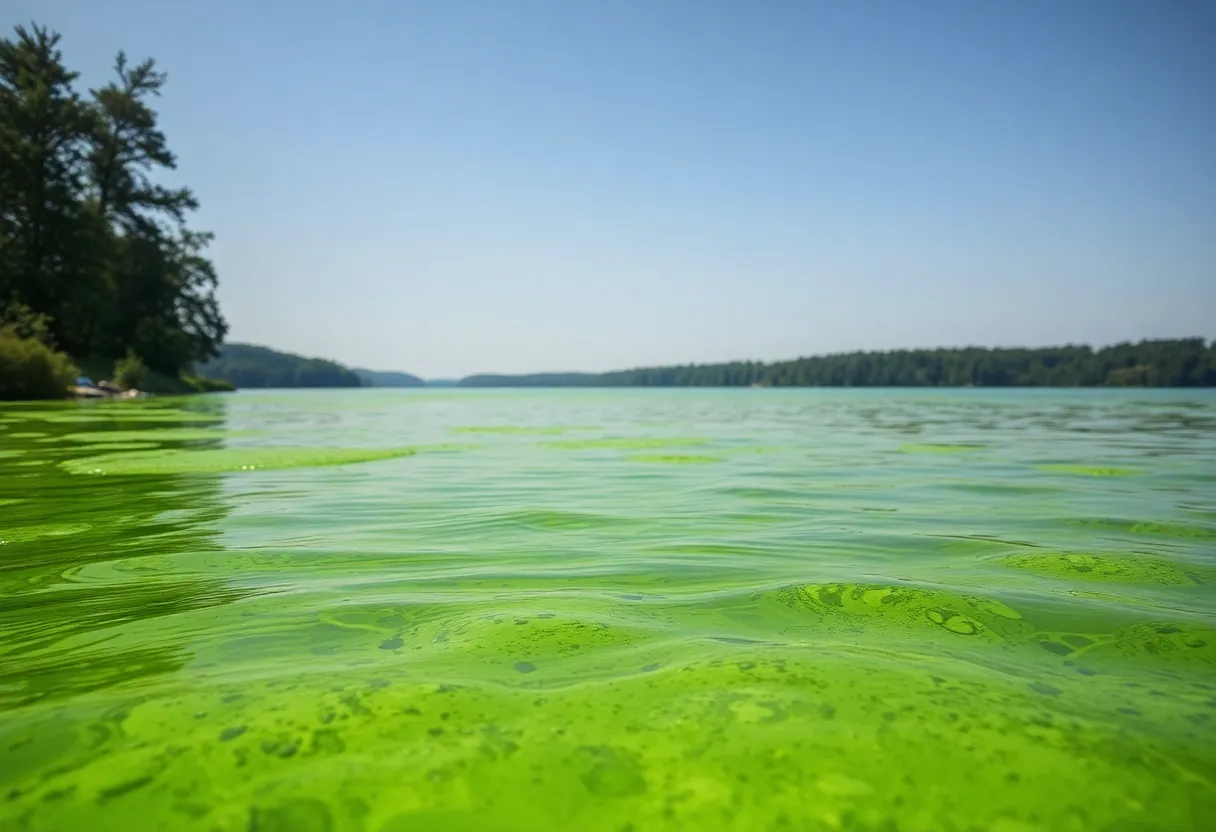News Summary
Rhode Island health authorities have issued a warning about harmful algae contamination in Meshanticut Lake. Residents and visitors are advised to avoid contact with the water and refrain from recreational activities. The blue-green algae can lead to serious health risks, prompting an advisory across multiple bodies of water in the area. It is crucial for the public to stay informed and exercise caution around potentially contaminated waters.
Cranston, RI – In a public health update, the Rhode Island Departments of Public Health and Environmental Management have issued a warning regarding harmful algae contamination in Meshanticut Lake. The announcement advises residents and visitors to avoid all contact with the lake’s waters and to refrain from participating in any recreational activities, including swimming, fishing, boating, and kayaking.
The presence of blue-green algae poses significant health risks, and authorities emphasize the importance of avoiding untreated water from the lake. Additionally, fish caught in these waters should not be consumed, and pet owners must take precautions to prevent their pets from drinking or swimming in the affected areas.
Health Risks Associated with Blue-Green Algae
Exposure to the contaminated waters of Meshanticut Lake may lead to various health symptoms. Common reactions from contact with blue-green algae include:
- Skin irritation
- Irritation of the nose, eyes, and throat
- Stomachaches
- Diarrhea
- Vomiting
- Nausea
Less frequently, individuals may experience more severe symptoms, such as dizziness, headaches, fever, liver damage, or nervous system complications. Anyone who comes into contact with the contaminated water and exhibits these symptoms is urged to seek medical attention immediately.
Extent of Contamination
The advisory regarding the harmful algae bloom is currently ongoing and will remain in effect until further notice. In addition to Meshanticut Lake, other bodies of water in Rhode Island, including the Flat River Reservoir, Roger Williams Park ponds, and Newport Pond, have also reported similar algae contamination issues.
Identifying Harmful Algae Blooms
Visually, water affected by harmful algae blooms may vary in color, appearing bright to dark green and could resemble thick green paint, pea soup, or green cottage cheese. Residents are encouraged to be vigilant and cautious around any bodies of water exhibiting these characteristics.
Background on Algal Blooms
Harmful algal blooms occur when certain types of algae grow excessively in freshwater and are influenced by several environmental factors, including nutrient pollution, warm weather, and stagnant water conditions. Algae can release toxins that are harmful to both humans and animals, leading to public health warnings and advisories in affected areas.
As summer approaches and outdoor recreational activities become more popular, awareness of water safety is crucial. The Rhode Island Departments of Public Health and Environmental Management continue to monitor the situation closely and may update the public as more information becomes available.
Residents are encouraged to share this information with others and stay informed about the health recommendations related to Meshanticut Lake and other bodies of water in the region. Taking preventative action by adhering to the public health advisory can help mitigate health risks associated with harmful algal blooms.
Deeper Dive: News & Info About This Topic
HERE Resources
Public Health Warning in Cranston Due to Toxic Algae
Additional Resources
- Patch: Harmful Algae Has Infected Cranston’s Meshanticut Lake
- Wikipedia: Harmful Algal Bloom
- Turn to 10: Health Officials Recommend Avoiding Worden Pond Algae Blooms
- Google Search: Harmful Algae RI
- Patch: Roger Williams Park Ponds Infected with Harmful Algae
- Encyclopedia Britannica: Algae
- Patch: Coventry’s Flat River Reservoir Infected with Algae
- Google News: Harmful Algae Blooms RI
- Cranston Online: Spectacle Pond Bloom Health Advisory
- Google Scholar: Harmful Algal Blooms Health Effects

Author: STAFF HERE PROVIDENCE WRITER
The PROVIDENCE STAFF WRITER represents the experienced team at HEREProvidence.com, your go-to source for actionable local news and information in Providence, Providence County, and beyond. Specializing in "news you can use," we cover essential topics like product reviews for personal and business needs, local business directories, politics, real estate trends, neighborhood insights, and state news affecting the area—with deep expertise drawn from years of dedicated reporting and strong community input, including local press releases and business updates. We deliver top reporting on high-value events such as WaterFire, Rhode Island International Film Festival, and Rhode Island Comic Con. Our coverage extends to key organizations like the Greater Providence Chamber of Commerce and Providence Warwick Convention & Visitors Bureau, plus leading businesses in finance and manufacturing that power the local economy such as Citizens Financial Group and Textron. As part of the broader HERE network, we provide comprehensive, credible insights into Rhode Island's dynamic landscape.





